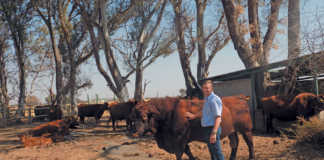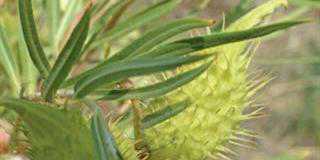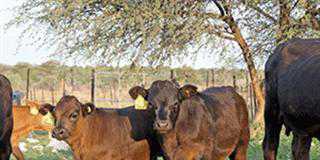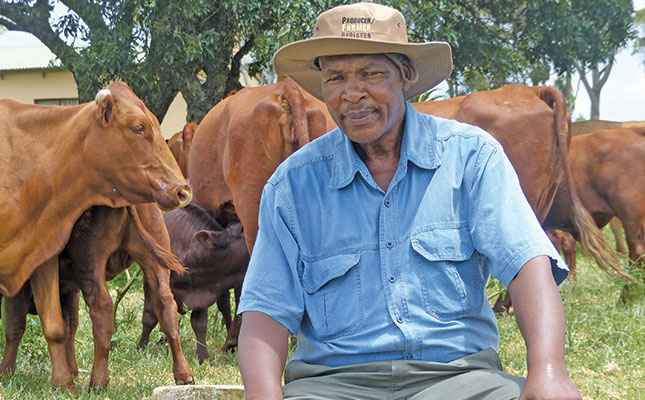
Photo: Mike Burgess
“With Bonsmaras, I can produce quality weaners that are attractive to the market,’’ says Desmond Siteti, who runs 75 commercial breeding female animals on the 500ha mixed-veld farm, Tower Hill, near Makhanda in the Eastern Cape.
“Correct genetics is everything; I’m serious about quality rather than quantity.’’
Achieving genetic progress in a livestock enterprise requires a long-term vision.
“When breeding livestock you must be patient; it’s a journey without an immediate destination,” says Siteti. “You can never relax and must be dedicated to improving genetic quality.”
An integral part of this vision for Siteti was to commit to work in the mining sector of Gauteng for almost four decades to be able to acquire top genetics for his livestock initiative back in the Eastern Cape. Family members and managers kept an eye on the animals in his absence.
He finally returned to the Eastern Cape for good in 2016 and admits great relief in being able to personally oversee the management of his livestock, a situation that has resulted in fewer overall mortalities. “Now that I’m back, there are fewer skins from dead animals!” he says.
Siteti grew up as a farmworker’s son on a commercial farm in the Makhanda district. His father, Thompson, was responsible for a flock of goats that Siteti helped manage after school. In the 1970s, the family relocated to the nearby Pikoli area of the former Ciskei, where Siteti and his brother Metford managed a handful of goats and cattle on communal land.
In 1979, after much deliberation, Siteti decided to leave for the mines of the Witwatersrand, while Metford agreed to manage the livestock in his absence.
By the early 1980s, Siteti was able to fund the purchase of quality Boer goat rams that were used on their crossbred flock of goats. The brothers were amazed by the improved conformation of the offspring, and Siteti still runs 65 top Boer goat ewes in Pikoli.
He decided to use the same approach on their crossbred cows, eventually turning to Bonsmara bulls in 2002. He and Metford were immediately impressed with the Bonsmara-type offspring. When Metford died in 2004, Siteti chose to continue working in the processing division of the Gold One Group and relied on hired staff to manage his livestock.
He nonetheless travelled to the Eastern Cape as often as possible.
Within the next few seasons, his small beef herd took on a distinct Bonsmara character and in 2010 he decided to purchase 12 heifers from Alphaeton Bonsmaras near Fort Beaufort in the Eastern Cape.
By this stage, Siteti was actively looking for a commercial farm in order to escape the pitfalls faced by farmers in communal areas. His most serious challenge to effective production was keeping rogue bulls from gaining access to his Bonsmara breeding cows.
In 2012, he managed to access Tower Hill farm through the state land reform programme and moved his cattle there. In the same year, he bought a Bonsmara bull for R34 000 at the Frontier Bonsmara Sale in Makhanda, as well as eight in-calf cows, also from Alphaeton Bonsmaras. He also decided to start a Savanna goat flock (today numbering 32 top ewes) to make the most of the browsing potential on Tower Hill.
Careful selection of bulls
Over the past 20 years, Siteti hasn’t hesitated to buy the best possible Bonsmara herd sires. “I’m not afraid to pay for a bull, because I know I’ll get a good genetic return,” he says.
He has also not been shy to shop around for genetics, having purchased bulls from a range of breeders in the Eastern Cape and beyond. These include Frontier Bonsmaras (a group of five breeders from Makhanda and surrounding districts), Alphaeton Bonsmaras (Fort Beaufort, Eastern Cape), Glen Glyde Bonsmaras (Komga, Eastern Cape), Arcadia Bonsmaras (Vrede, the Free State), and Up George Bonsmaras (Ladysmith, KwaZulu-Natal).
When selecting a bull, Siteti first tries to separate muscled animals from those that have simply been fattened through standard pre-auction feeding regimes.
“You must have an eye for selecting a bull with real muscling,’’ he explains. “You don’t want a fattened bull that after two to three months will start dropping in condition.’’
Using estimated breeding values (EBVs) as a selection tool is also crucial. Siteti tells of a mishap when he purchased a bull with a birthweight EBV of over 40kg.
“I had a massive problem; I had to pull the calves out of almost every heifer,’’ he says.
“Now, if a bull catches my eye, the first thing I look at is the birthweight EBV. I don’t ever want a bull with a birthweight EBV of more than 40kg.’’
Breeding and management
Of the 75 breeding female animals Siteti currently runs on Tower Hill farm, 26 are heifers. The herd achieved an 80% calving rate during the past calving season, and heifers are put to the bull at the age of two years (from November to February), as Siteti has found heifers calving at a younger age tend not to grow out into top mature cows.
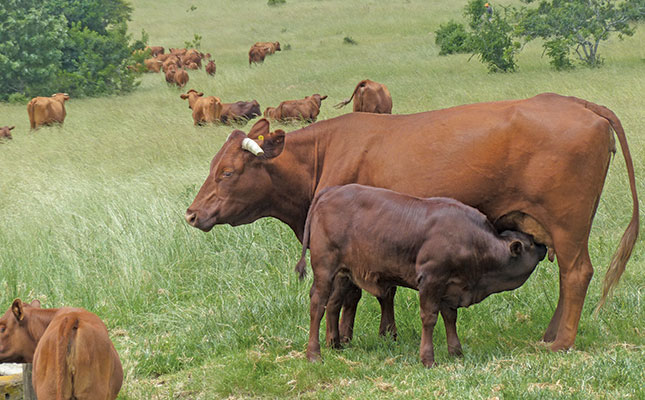
Siteti’s Bonsmara cows weigh on average between 450kg and 500kg and are replaced with selected heifers based on a number of factors.“Obviously, I’ll check the quality of a cow’s teeth, her condition and that of her calf, as she may be battling to produce enough milk,” he explains. “I decide which cows I’m going to cull after they wean their calves.’’
Female animals produce weaners with an average weight of 230kg at an age of six to seven months and are marketed from the veld through Hobson & Co. Siteti used to grow oxen out to the age of two to three years specifically for traditional markets.
He has discontinued this, however, as he is convinced that it’s more profitable to produce weaners by saving the grass, which would have been utilised by the oxen, for producing cows.
Weaner heifers not selected as replacements are either sold as breeding stock or added to the yearly weaner parcel.
Cattle are subjected to a standard inoculation regime. Siteti stresses the importance of deworming calves and prioritising the protection of fertility in female animals. Treating heifers against contagious abortion and vibriosis, for example, is non-negotiable.
Tick loads
Tower Hill farm is in an area plagued by redwater, heartwater and gallsickness, and the animals are therefore plunge-dipped once a week in summer and, depending on tick loads, every two to four weeks in winter. Cattle receive a phosphate and protein lick in summer and winter respectively, while Browse Plus is added to drinking water to stimulate the Bonsmara’s browsing potential.
Siteti explains that grazing is managed by attempting to adhere to a stocking rate of
1 MLU/3ha, following a strict rotational grazing programme and removing invasive black wattle to improve grazing potential. This strategy has allowed him to run his well-adapted Bonsmaras exclusively on the veld even during the driest of times.
“I’m happy that I farm Bonsmaras. It’s an advantage, especially in times of drought. They really have proved themselves to be very hardy,” he says.
Phone Desmond Siteti on 083 418 5558.








